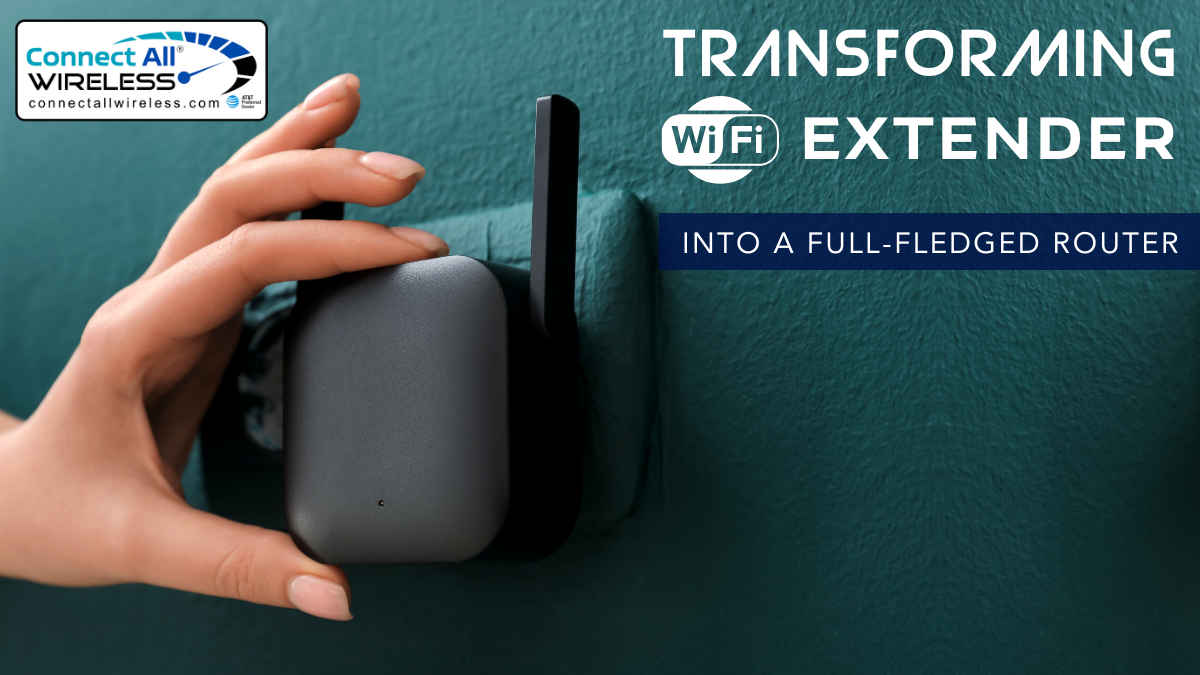Transforming a WiFi Extender into a Full-Fledged Router
December 22, 2023In the ever-evolving landscape of technology, the need for a strong and reliable internet connection is more crucial than ever. While WiFi extenders are commonly used to boost the range of an existing wireless network, many users are unaware of the hidden potential within these devices. In this guide, we will explore how to transform a simple WiFi extender into a full-fledged router, unlocking advanced features and capabilities that can significantly enhance your home network.
Understanding the Basics
Before diving into the transformation process, it’s essential to understand the basic functionalities of both WiFi extenders and routers. A WiFi extender, also known as a range extender, is designed to amplify and rebroadcast the existing WiFi signal, improving coverage in areas with a weak connection. On the other hand, a router is the primary device responsible for distributing internet connectivity throughout your home.
Materials Needed
To embark on this transformation journey, gather the following materials:
WiFi Extender
Ethernet Cable
Computer or Laptop
Internet Modem
Pen and Paper (for jotting down settings)
Step 1: Accessing the WiFi Extender
Begin by connecting your computer or laptop to the WiFi extender using an Ethernet cable. This ensures a stable and direct connection for the setup process. Access the extender’s settings by typing its IP address into a web browser. Typically, the IP address is mentioned in the extender’s manual.
Step 2: Changing Operating Modes
WiFi extenders often come with different operating modes. Locate the mode settings in the extender’s interface and switch it from “Extender” or “Repeater” mode to “Router” mode. This step is crucial for enabling the device to function as a standalone router.
Step 3: Configuring Network Settings
Once in the router mode, you’ll need to configure the network settings. Set a unique SSID (Service Set Identifier) and password for your new router. This will be the network name and password that devices will use to connect.
Step 4: DHCP Configuration
Dynamic Host Configuration Protocol (DHCP) is responsible for assigning IP addresses to devices on your network. Enable the DHCP function on the extender and set a range for the IP addresses it can assign. Make sure the range doesn’t overlap with the IP addresses assigned by your main router.
Step 5: Connecting to the Internet Modem
Connect the WiFi extender to your internet modem using an Ethernet cable. This establishes a direct link between the new router and the internet source. Ensure that the internet modem is set to bridge mode or modem-only mode to avoid conflicts with the new router.
Step 6: Testing and Troubleshooting
After configuring the settings, it’s time to test the newly transformed router. Connect your devices to the new WiFi network and check if they can access the internet. If any issues arise, refer to the extender’s manual or online resources for troubleshooting guidance.
Benefits of a Full-Fledged Router
Transforming a WiFi extender into a full-fledged router brings several advantages to your home network:
Increased Control: Gain more control over network settings, including security protocols, port forwarding, and Quality of Service (QoS) configurations.
Expanded Coverage: Enjoy improved coverage and performance, as the new router can be strategically placed to eliminate dead zones.
Advanced Security Features: Many routers offer advanced security features, such as a built-in firewall and VPN support, enhancing the overall security of your network.
Customization Options: Customize your network to suit your specific needs, including the ability to prioritize certain devices for a smoother online experience.
Conclusion
In the pursuit of the best WiFi in Michigan, the transformation of a WiFi extender into a full-fledged router emerges as a game-changer. This process not only extends coverage but also unlocks a realm of customization, control, and enhanced performance. By harnessing this potential, users can sculpt their networks to suit individual needs, ensuring seamless connectivity across homes, offices, and beyond.
This transformation empowers Michigan residents to craft a robust, personalized WiFi experience, eradicating dead zones and fostering a connected environment tailored to their unique demands. With advanced features, expanded coverage, and heightened security, the journey from extender to router signifies a leap towards an elevated internet experience, paving the way for the best WiFi encounters in Michigan’s diverse landscapes.


